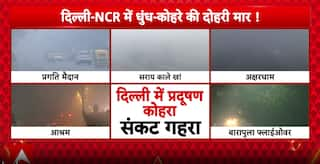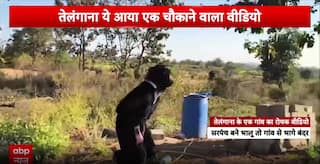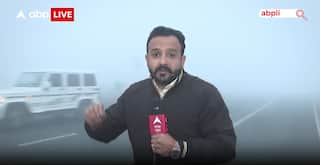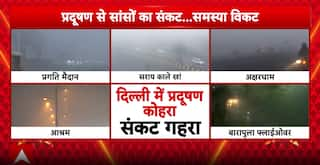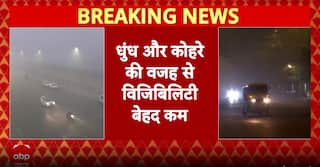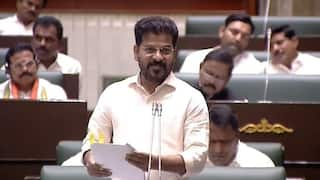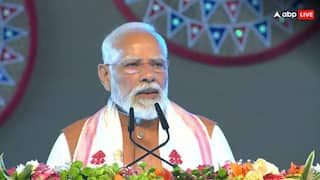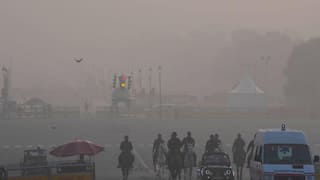Explorer
On Being at the Top of the World: Mt. Modi and Mt. Everest
So what does it feel like being at the top of the world? Narendra Modi would know, and what is wholly distinct about him is that he stands in singular and sinister isolation at the summit of Indian politics.

"Majestic and magnificent.Serene and spiritual. There is something very special about the Himalayas. It is always a humbling experience to return to the mountains," PM Narendra Modi posted on Twitter on May 19, 2019.
I opened the newspapers on May 24 th to two disconcerting even stupefying stories that are wholly unrelated and yet, to my mind, seem strangely if not inextricably linked in several ways. Both stories captured the world’s attention, if for altogether different reasons. In India, the incumbent Prime Minister, Narendra Modi, had not only retained his seat in Varanasi by a huge margin but he had led his party to a crushing and decisive victory over his political foes, scattering his opponents like atoms in the dust. The Indian Express’s chief political columnist, Pratap Bhanu Mehta, headlined the achievement of Modi with the phrase, “Staggering Dominance”. Some in the media spoke of his “landslide reelection”, while others described the unambiguous “mandate” he had received from the country.
In neighboring Nepal, meanwhile, the summit of Mount Everest, the tallest mountain in the world at 29,028 feet, had become something like a clogged highway. “On Mt. Everest,” the article in the New York Times stated, “Heavy Traffic isn’t Just Inconvenient. It Can Be Deadly.” The photograph accompanying the article tells a story staggering in the extreme: mountaineers are queued up, as people in South Asia often are at bus stations, railway ticket offices, cinema halls, and government offices, to climb the summit. The line is several hundred meters long, perhaps even longer than a mile. Death at the highest point on earth can be caused by frostbite, oxygen depletion, long exposure to the inclement weather, high altitude sickness—and, now, a traffic jam. Two climbers had died under these difficult circumstances when the first reports appeared on May 23-24; in the following days, at least another eight climbers died. In 2018, by contrast, five climbers had died during the entire climbing season.
So what does it feel like being at the top of the world? Narendra Modi would know, and what is wholly distinct about him is that he stands in singular and sinister isolation at the summit of Indian politics. The BJP had almost wiped out the Congress, and nearly all other opposition, in 2014; no one, barring perhaps the BJP, which in the voice of Modi has declared that it aims to win the votes of all 900 million Indian voters, thought that the 2019 election outcome would result in the further decimation of the opposition. Under the existing rules of the Indian Parliament, established by the first Lok Sabha speaker, G. V. Mavlankar, and finally codified under the Parliament (Facilities) Act 1998, an official “leader of the opposition” in either House cannot be declared until an opposition party has at least 10% of the seats. With 44 seats in 2014 the Congress did not qualify as the “opposition” in the Lok Sabha, which has a membership of 543. Having fallen short of the target of 55 seats by 3 seats this year, the Congress still does not quality.
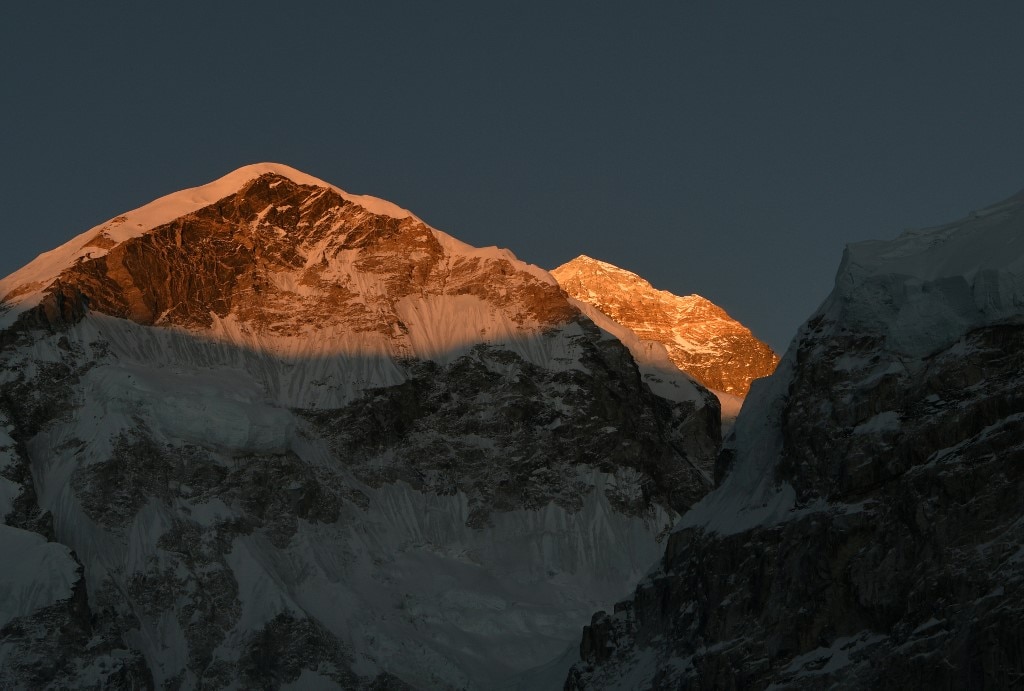 Mount Everest in the Himalayas, some 140km northeast of the Nepali capital Kathmandu. FILE PIC/AFP.
We may say, then, that Modi rules the Indian political scene much as Jawaharlal Nehru and Indira Gandhi did in their times. It may be comforting for Modi’s critics to believe that those who rise so spectacularly to the top are likely to have a precipitous fall: that is not always the case. The greater concern, to invoke Lord Acton’s maxim, is that “power corrupts, absolute power corrupts absolutely”. If Modi and the BJP have captured all the institutions of state power, and bankrupted or emasculated those which are not so readily pliable to the will of the party, the circumstances for the longevity of Indian democracy in any meaningful sense of the term cannot be described as propitious. More than 70 years after independence, the summit should have been crowded—with ideas, with the play of the imagination, with parties speaking in different tongues and articulating compelling narratives of social justice. Instead, what do we find? The Congress has become moribund, the Communists eviscerated. There is only one narrative now—call it Hindu pride or call it the Hindu nation-state, but it is more effectively captured by one word: Modi. “In New India,” as one newspaper put it, “the prime minister towers above all parties, including his own.”
Ironically, at the summit of Mt. Everest, where it should have been all quiet, the parking lot is full. The Arizona doctor who arrived on the summit was in for a surprise: on the flat part of the summit, about the size of two ping-pong tables, 15-20 mountaineers were jockeying for positions to take selfies. He thought he had arrived at a “zoo.” The saints who in India have for millennia been arguing that there is no solitude anywhere except within one’s own self perhaps knew a thing or two that we may be recognizing today—even atop Everest. Why do people climb Everest? We doubtless know all the answers: the thrill associated with taking risks, the flirtation with death, the challenge it poses to even experienced climbers, the human need to continue to scale new heights, and others in that vein. One person, I forget who, put it starkly, and with likely greater plausibility: because it is there.
The history books which speak of Everest being first “conquered” by Edmund Hillary and Tenzing Norway in 1953 are still closer to the truth in that they suggest, if unwittingly, that the narrative of conquest has all along triggered the exodus to Everest. This exodus has, besides the zoo at the summit, created a veritable garbage dump all along the path from the base camp to the summit.
Though Modi stands singularly at the top of the world, and Everest as the top of the world has become a crowded place, Mt. Modi and Mt. Everest share, in more ways than we can imagine, threads of the same narrative of conquest, of twitter and selfies, and the difficulties of solitude and reflection in these times. We don’t know how many lives have been discarded on the ascendant path to Mt. Modi and Mt. Everest and where it will stop.
(Vinay Lal is a writer, blogger, cultural critic, and Professor of History at UCLA)
Disclaimer: The opinions, beliefs and views expressed by the various authors and forum participants on this website are personal and do not reflect the opinions, beliefs and views of ABP News Network Pvt Ltd.
Mount Everest in the Himalayas, some 140km northeast of the Nepali capital Kathmandu. FILE PIC/AFP.
We may say, then, that Modi rules the Indian political scene much as Jawaharlal Nehru and Indira Gandhi did in their times. It may be comforting for Modi’s critics to believe that those who rise so spectacularly to the top are likely to have a precipitous fall: that is not always the case. The greater concern, to invoke Lord Acton’s maxim, is that “power corrupts, absolute power corrupts absolutely”. If Modi and the BJP have captured all the institutions of state power, and bankrupted or emasculated those which are not so readily pliable to the will of the party, the circumstances for the longevity of Indian democracy in any meaningful sense of the term cannot be described as propitious. More than 70 years after independence, the summit should have been crowded—with ideas, with the play of the imagination, with parties speaking in different tongues and articulating compelling narratives of social justice. Instead, what do we find? The Congress has become moribund, the Communists eviscerated. There is only one narrative now—call it Hindu pride or call it the Hindu nation-state, but it is more effectively captured by one word: Modi. “In New India,” as one newspaper put it, “the prime minister towers above all parties, including his own.”
Ironically, at the summit of Mt. Everest, where it should have been all quiet, the parking lot is full. The Arizona doctor who arrived on the summit was in for a surprise: on the flat part of the summit, about the size of two ping-pong tables, 15-20 mountaineers were jockeying for positions to take selfies. He thought he had arrived at a “zoo.” The saints who in India have for millennia been arguing that there is no solitude anywhere except within one’s own self perhaps knew a thing or two that we may be recognizing today—even atop Everest. Why do people climb Everest? We doubtless know all the answers: the thrill associated with taking risks, the flirtation with death, the challenge it poses to even experienced climbers, the human need to continue to scale new heights, and others in that vein. One person, I forget who, put it starkly, and with likely greater plausibility: because it is there.
The history books which speak of Everest being first “conquered” by Edmund Hillary and Tenzing Norway in 1953 are still closer to the truth in that they suggest, if unwittingly, that the narrative of conquest has all along triggered the exodus to Everest. This exodus has, besides the zoo at the summit, created a veritable garbage dump all along the path from the base camp to the summit.
Though Modi stands singularly at the top of the world, and Everest as the top of the world has become a crowded place, Mt. Modi and Mt. Everest share, in more ways than we can imagine, threads of the same narrative of conquest, of twitter and selfies, and the difficulties of solitude and reflection in these times. We don’t know how many lives have been discarded on the ascendant path to Mt. Modi and Mt. Everest and where it will stop.
(Vinay Lal is a writer, blogger, cultural critic, and Professor of History at UCLA)
Disclaimer: The opinions, beliefs and views expressed by the various authors and forum participants on this website are personal and do not reflect the opinions, beliefs and views of ABP News Network Pvt Ltd.
 Mount Everest in the Himalayas, some 140km northeast of the Nepali capital Kathmandu. FILE PIC/AFP.
We may say, then, that Modi rules the Indian political scene much as Jawaharlal Nehru and Indira Gandhi did in their times. It may be comforting for Modi’s critics to believe that those who rise so spectacularly to the top are likely to have a precipitous fall: that is not always the case. The greater concern, to invoke Lord Acton’s maxim, is that “power corrupts, absolute power corrupts absolutely”. If Modi and the BJP have captured all the institutions of state power, and bankrupted or emasculated those which are not so readily pliable to the will of the party, the circumstances for the longevity of Indian democracy in any meaningful sense of the term cannot be described as propitious. More than 70 years after independence, the summit should have been crowded—with ideas, with the play of the imagination, with parties speaking in different tongues and articulating compelling narratives of social justice. Instead, what do we find? The Congress has become moribund, the Communists eviscerated. There is only one narrative now—call it Hindu pride or call it the Hindu nation-state, but it is more effectively captured by one word: Modi. “In New India,” as one newspaper put it, “the prime minister towers above all parties, including his own.”
Ironically, at the summit of Mt. Everest, where it should have been all quiet, the parking lot is full. The Arizona doctor who arrived on the summit was in for a surprise: on the flat part of the summit, about the size of two ping-pong tables, 15-20 mountaineers were jockeying for positions to take selfies. He thought he had arrived at a “zoo.” The saints who in India have for millennia been arguing that there is no solitude anywhere except within one’s own self perhaps knew a thing or two that we may be recognizing today—even atop Everest. Why do people climb Everest? We doubtless know all the answers: the thrill associated with taking risks, the flirtation with death, the challenge it poses to even experienced climbers, the human need to continue to scale new heights, and others in that vein. One person, I forget who, put it starkly, and with likely greater plausibility: because it is there.
The history books which speak of Everest being first “conquered” by Edmund Hillary and Tenzing Norway in 1953 are still closer to the truth in that they suggest, if unwittingly, that the narrative of conquest has all along triggered the exodus to Everest. This exodus has, besides the zoo at the summit, created a veritable garbage dump all along the path from the base camp to the summit.
Though Modi stands singularly at the top of the world, and Everest as the top of the world has become a crowded place, Mt. Modi and Mt. Everest share, in more ways than we can imagine, threads of the same narrative of conquest, of twitter and selfies, and the difficulties of solitude and reflection in these times. We don’t know how many lives have been discarded on the ascendant path to Mt. Modi and Mt. Everest and where it will stop.
(Vinay Lal is a writer, blogger, cultural critic, and Professor of History at UCLA)
Disclaimer: The opinions, beliefs and views expressed by the various authors and forum participants on this website are personal and do not reflect the opinions, beliefs and views of ABP News Network Pvt Ltd.
Mount Everest in the Himalayas, some 140km northeast of the Nepali capital Kathmandu. FILE PIC/AFP.
We may say, then, that Modi rules the Indian political scene much as Jawaharlal Nehru and Indira Gandhi did in their times. It may be comforting for Modi’s critics to believe that those who rise so spectacularly to the top are likely to have a precipitous fall: that is not always the case. The greater concern, to invoke Lord Acton’s maxim, is that “power corrupts, absolute power corrupts absolutely”. If Modi and the BJP have captured all the institutions of state power, and bankrupted or emasculated those which are not so readily pliable to the will of the party, the circumstances for the longevity of Indian democracy in any meaningful sense of the term cannot be described as propitious. More than 70 years after independence, the summit should have been crowded—with ideas, with the play of the imagination, with parties speaking in different tongues and articulating compelling narratives of social justice. Instead, what do we find? The Congress has become moribund, the Communists eviscerated. There is only one narrative now—call it Hindu pride or call it the Hindu nation-state, but it is more effectively captured by one word: Modi. “In New India,” as one newspaper put it, “the prime minister towers above all parties, including his own.”
Ironically, at the summit of Mt. Everest, where it should have been all quiet, the parking lot is full. The Arizona doctor who arrived on the summit was in for a surprise: on the flat part of the summit, about the size of two ping-pong tables, 15-20 mountaineers were jockeying for positions to take selfies. He thought he had arrived at a “zoo.” The saints who in India have for millennia been arguing that there is no solitude anywhere except within one’s own self perhaps knew a thing or two that we may be recognizing today—even atop Everest. Why do people climb Everest? We doubtless know all the answers: the thrill associated with taking risks, the flirtation with death, the challenge it poses to even experienced climbers, the human need to continue to scale new heights, and others in that vein. One person, I forget who, put it starkly, and with likely greater plausibility: because it is there.
The history books which speak of Everest being first “conquered” by Edmund Hillary and Tenzing Norway in 1953 are still closer to the truth in that they suggest, if unwittingly, that the narrative of conquest has all along triggered the exodus to Everest. This exodus has, besides the zoo at the summit, created a veritable garbage dump all along the path from the base camp to the summit.
Though Modi stands singularly at the top of the world, and Everest as the top of the world has become a crowded place, Mt. Modi and Mt. Everest share, in more ways than we can imagine, threads of the same narrative of conquest, of twitter and selfies, and the difficulties of solitude and reflection in these times. We don’t know how many lives have been discarded on the ascendant path to Mt. Modi and Mt. Everest and where it will stop.
(Vinay Lal is a writer, blogger, cultural critic, and Professor of History at UCLA)
Disclaimer: The opinions, beliefs and views expressed by the various authors and forum participants on this website are personal and do not reflect the opinions, beliefs and views of ABP News Network Pvt Ltd.
Follow Blog News on ABP Live for more latest stories and trending topics. Watch breaking news and top headlines online on ABP News LIVE TV
View More








